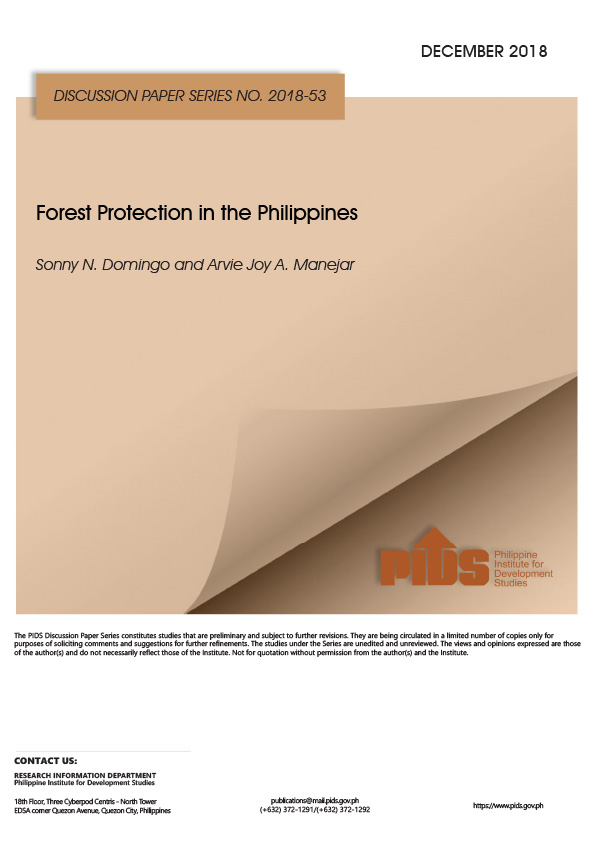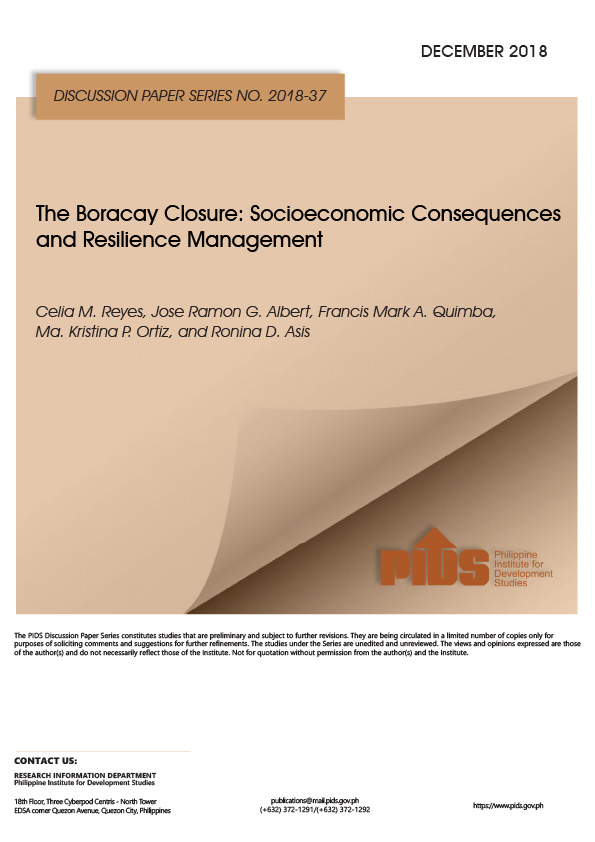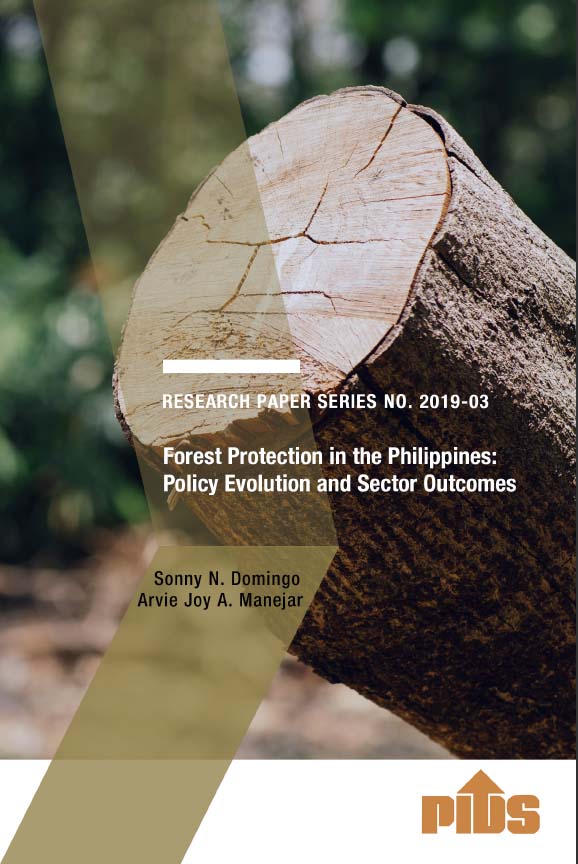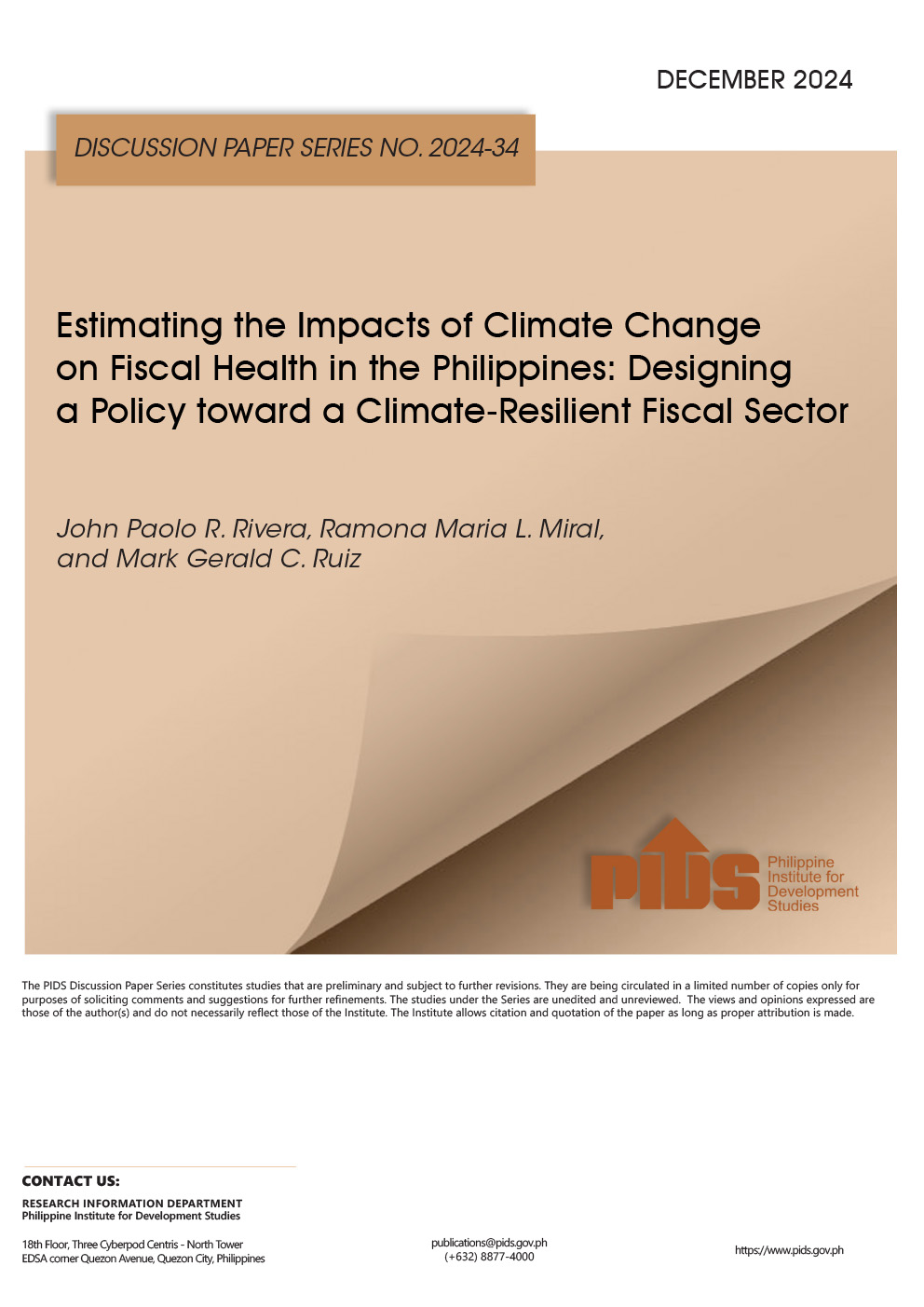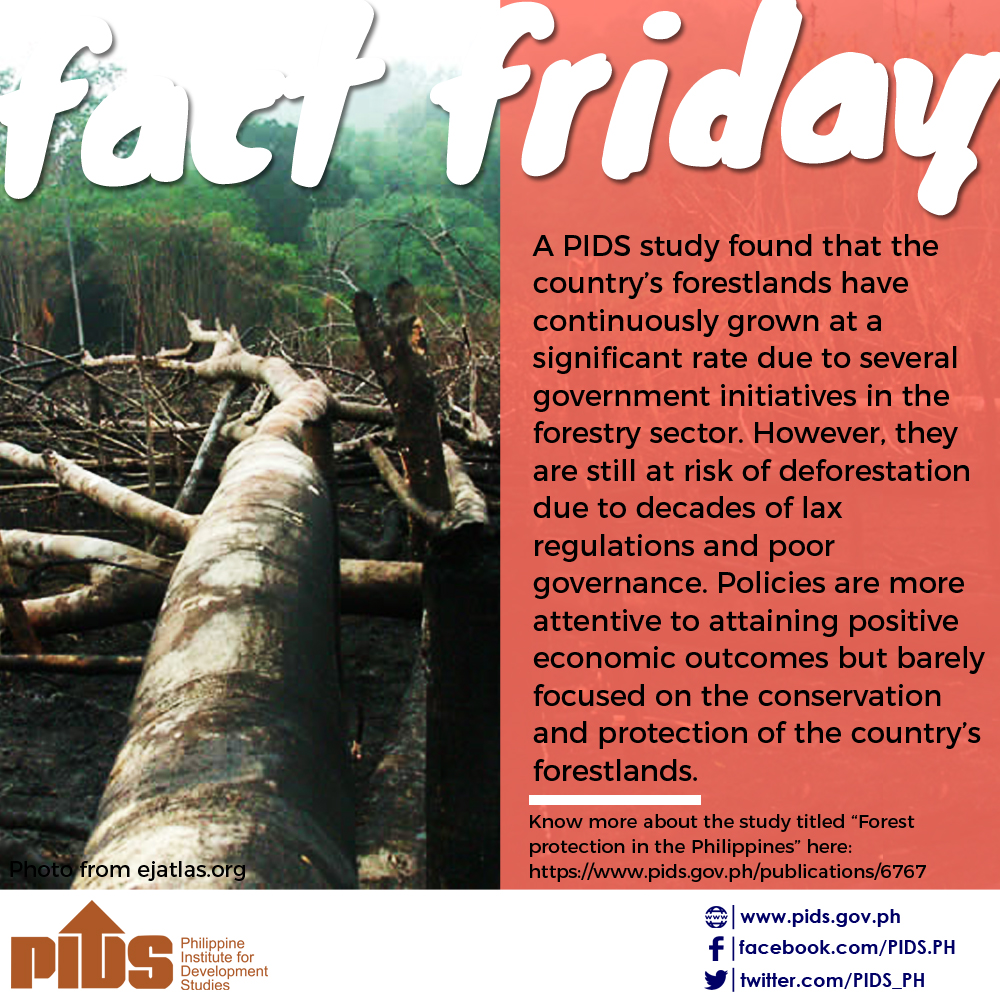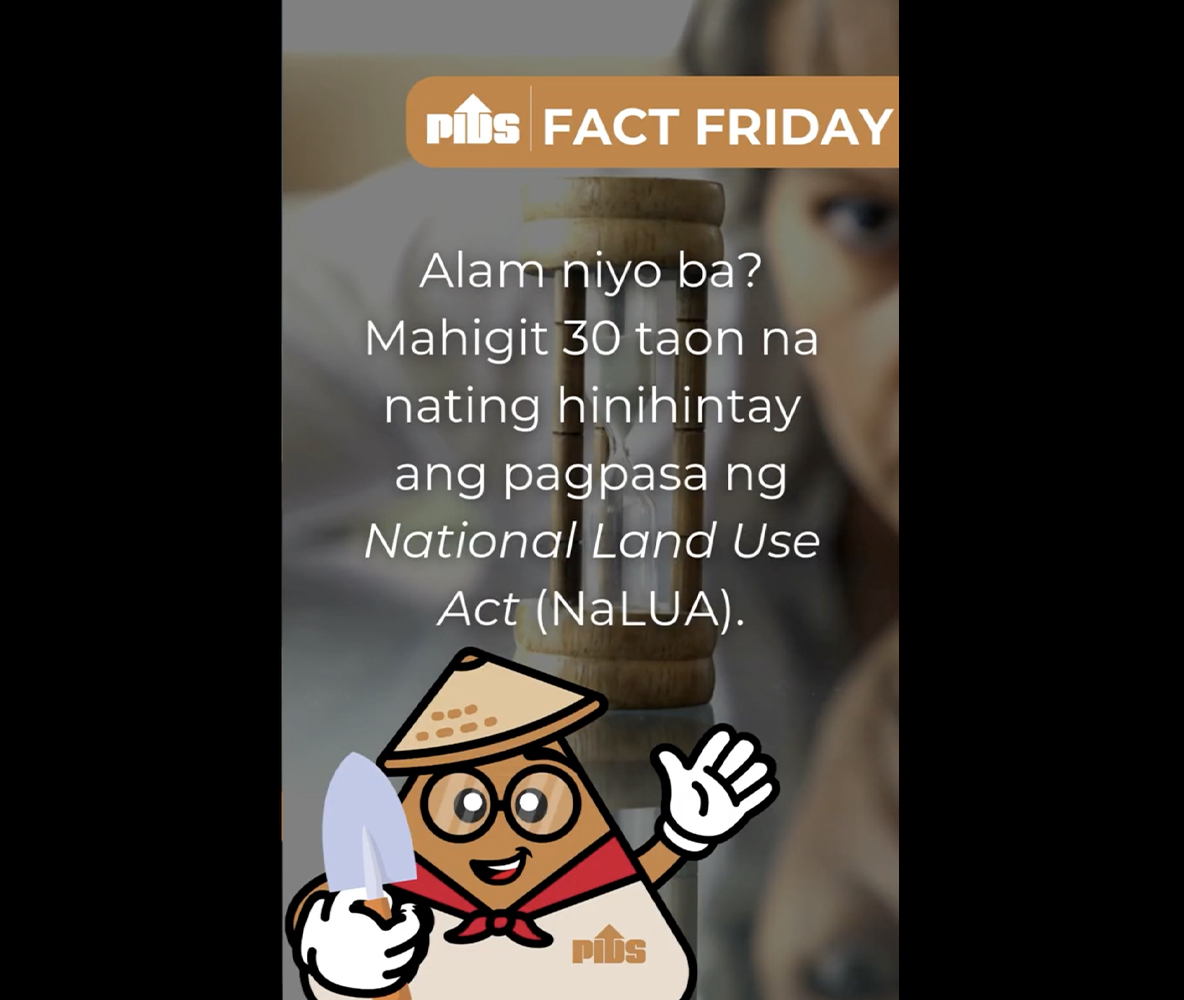The Philippines has a land mass of 30 million ha, 52.7 percent of which was classified as forestlands. The country was identified as a megadiverse area in terms of tropical forests and biodiverse ecosystems. Laws and policies were laid since 1975 in order to inform forest management strategies. The forestry sector recently banked its future in two landmark executive orders in 2011 which were EO 23 and EO 26, the former declaring a moratorium on logging and the latter implementing a National Greening Program. The significant reduction in forest cover may have been brought about by decades of lax legislations promoting extractive industries. It can be said that the policy landscape for the said sector experienced shifting priorities which resulted in overlapping priorities and implementation delays on the ground and across regions. Overall, it lacked provisions in enforcement and institutionalization. Demographic, economic, technological, institutional, and cultural factors were still predominant in the sector in the form of upland encroachment, multiple land uses, ineffective initiatives, and prevalence of non-complying extractive industries. Forest protection initiatives such as Lawin Program and the E-Filing Monitoring Systems were underway, but these could be strengthened with the passage of Sustainable Forest Management Bill in order to establish more sustainable methods of forest management.
Citations
This publication has been cited 1 time
- Ordinario, Cai. 2019. PIDS study pushes sustainable methods in forest management. BusinessMirror.

